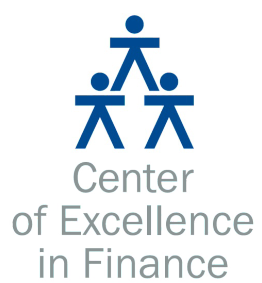
Posted by Suzanne Flynn, Fazeer Rahim, and Natalia Zbirciog-Vandenberghe[1]
A recent workshop organized by the Center of Excellence in Finance (CEF) in Ljubljana, Slovenia[2] discussed the benefits, approaches, and lessons learned in developing spending review processes in South-East European. The workshop was facilitated by experts from the IMF’s Fiscal Affairs Department, the Structural Reform Support Service (SRSS) of the European Commission (EC), and the Ministries of Finance and Justice of the Slovak Republic.
Participating countries (Albania, Greece, Lithuania, FYR Macedonia, Moldova, Montenegro, Malta, and Ukraine) are all at an early stage of using spending reviews as a tool to generate efficiency gains in public spending. Some countries have undertaken one-off sectoral spending reviews, while others are setting up the necessary structures to undertake such reviews. The event provided an opportunity for these countries to learn from the experience of EU Member States in implementing spending reviews, and to share their own experience.
In September 2016, the Eurogroup called on euro area Member States to actively use spending reviews and approved a set of common principles for improving expenditure management. These principles are: (i) strong and sustained political commitment at the national level; (ii) the use of international best practices in the design and implementation of spending reviews; (iii) monitoring the impact of spending reviews and communicating results to the public; and (iv) consistency between spending reviews and countries’ annual and multiannual budget planning procedures.
The importance of capacity building in this area is reflected in technical support delivered by the SRSS to a range of EU Member States, some of which have also attended training at the CEF.
The experience of Slovakia was presented by the Slovak officials. In 2016, the new government initiated a program of reviewing all areas of spending during its term of office. A Value for Money Unit was set up at the Ministry of Finance, which has subsequently conducted ten spending reviews (around three every year) covering IT systems, healthcare (twice), transport, education, labor market and social policies, the environment, groups at risk of poverty and social exclusion, agriculture and rural development, and the public sector wage bill. These reviews have been made public, and included in the government’s budget documentation.
Participants in the workshop agreed on the benefits of introducing a formal spending review process. These benefits include the reallocation of scare resources towards more productive areas, and the generation of fiscal space to enable the implementation of new policies. Spending reviews also require the central budget office to develop stronger tools and technical capacity for analyzing trends in public expenditure, estimating the cost of spending proposals and expenditure baselines, and benchmarking the performance of spending programs and projects in sectors such as health and education against international comparators. Developing such tools can help the central budget office engage in a more constructive discussion with spending ministries and agencies during the budget process.
Ten key lessons from European countries that have implemented spending reviews were also discussed, building on a survey conducted by the EC in 2017. These lessons include the need to:
- ensure high-level political commitment at all stages of the review process;
- adopt a medium-term perspective to allow more ambitious savings to be realized;
- set clear top-down savings targets to ensure that ambitious yet realistic policies are developed;
- link spending review timelines with the budget calendar;
- lock savings into multi-year budgets;
- combine the expertise of the central budget office with those of line ministries, and if needed, external experts;
- examine spending from different perspectives, both horizontally across programs and vertically across spending items;
- focus on areas where savings can be achieved most easily, especially for countries new to spending reviews;
- leave enough time to implement reforms, as this period is often under-estimated; and
- undertake regular and transparent monitoring of the savings achieved, and communicate information on the reviews and their impact to the public.
[1] Suzanne Flynn is the EC-Financed FAD PFM adviser under the project “Southeastern Europe: Strengthening Economic Governance and Public Financial Management”; Fazeer Rahim is a Senior Economist in FAD’s PFM 1 Division; Natalia Zbirciog-Vandenberghe is a PFM Policy Officer with the SRSS, European Commission.
[2] The Center of Excellence in Finance (CEF) is an international institution based in Slovenia which provides capacity development for public finance officials in countries of South-Eastern Europe. Simona Blazheska Stankovikj provided excellent facilitation – the digital story from the event is available here.
Note: The posts on the IMF PFM Blog should not be reported as representing the views of the IMF. The views expressed are those of the authors and do not necessarily represent those of the IMF or IMF policy.







